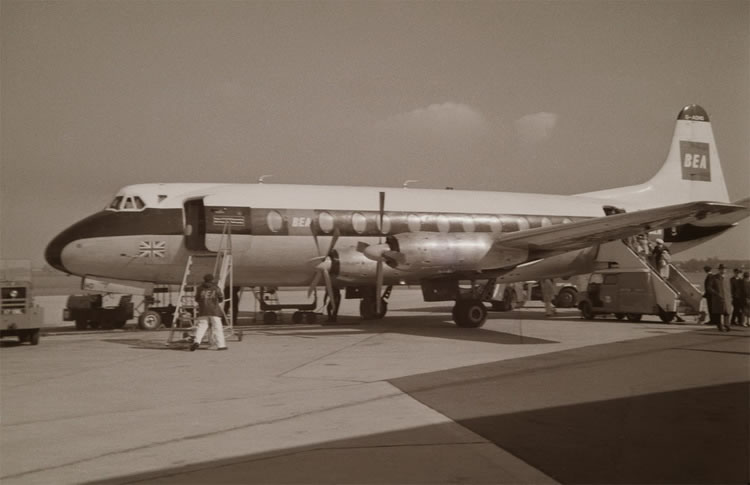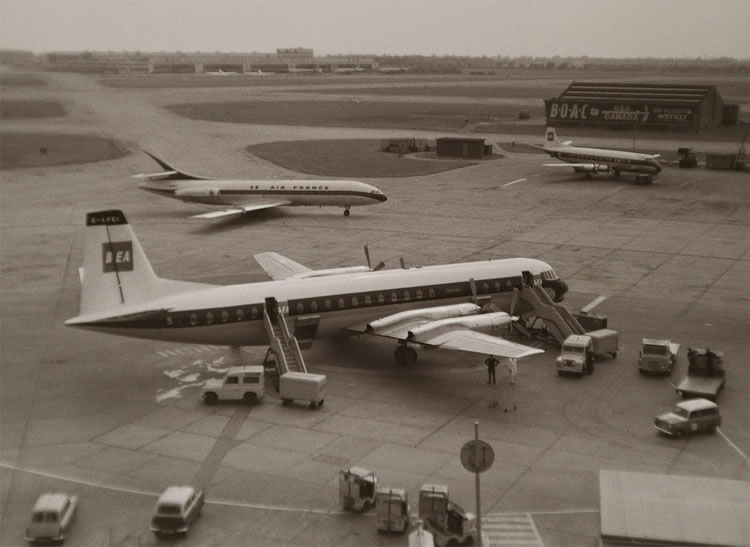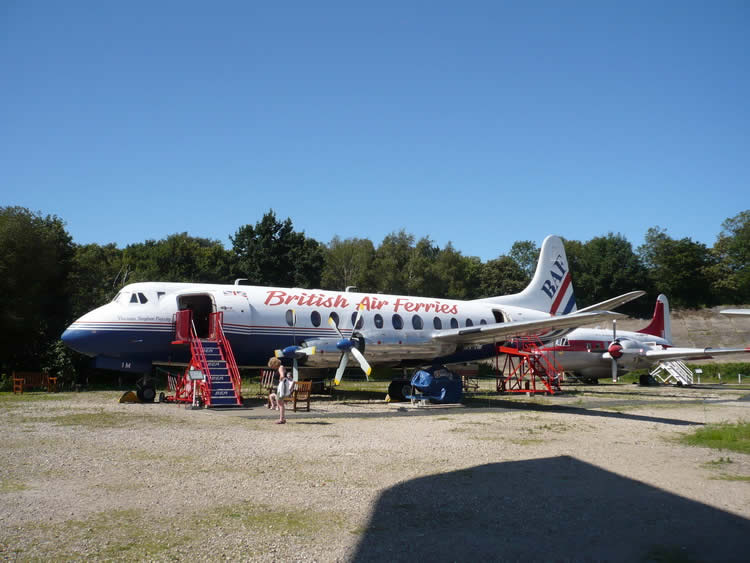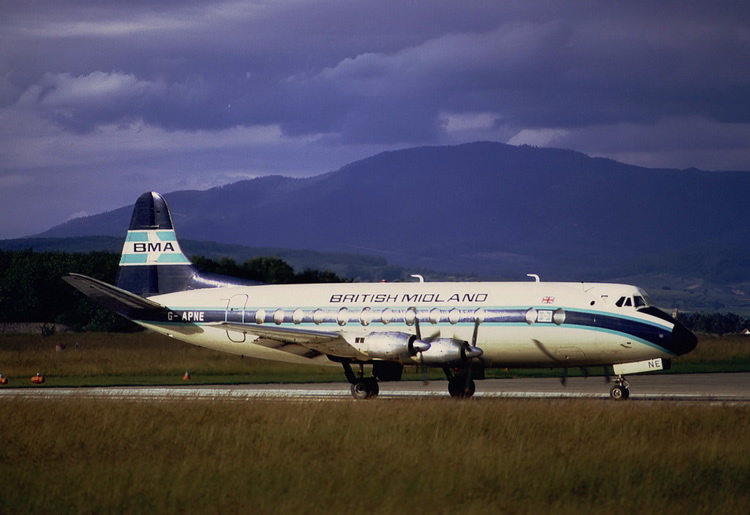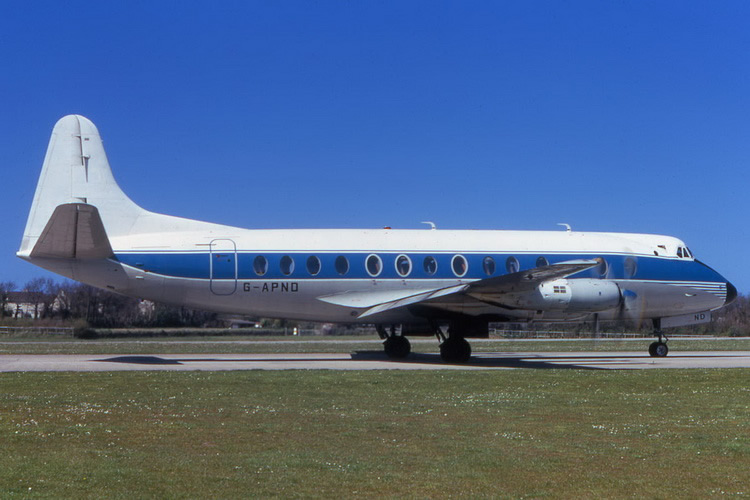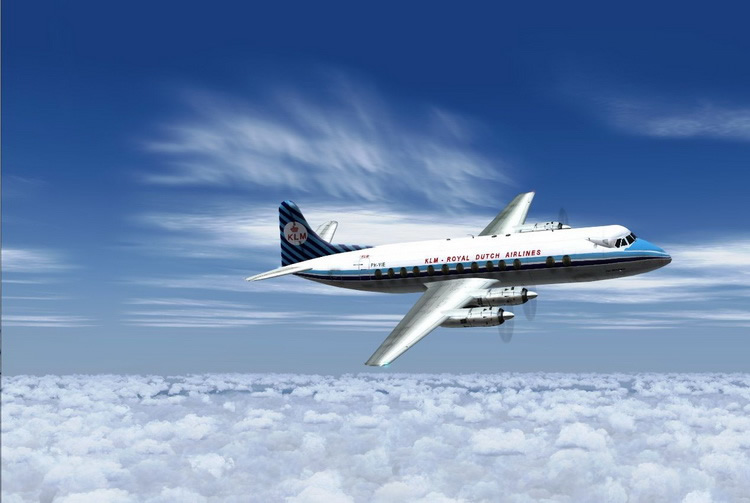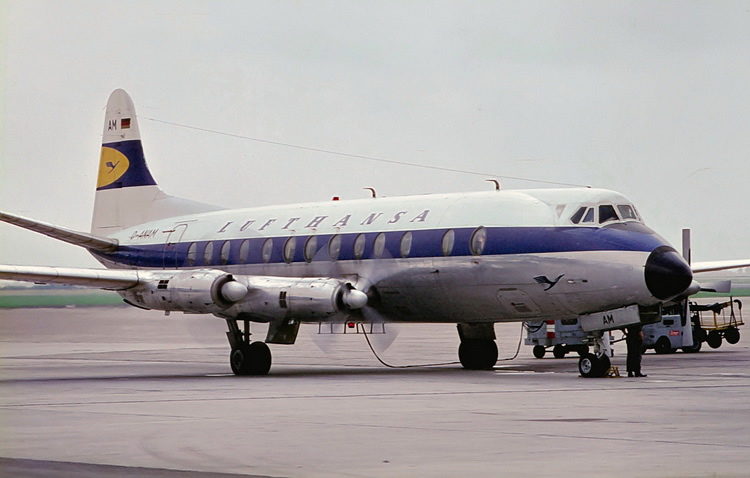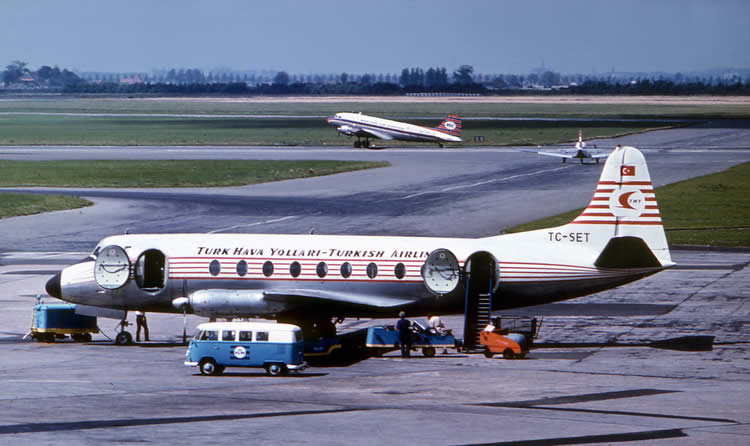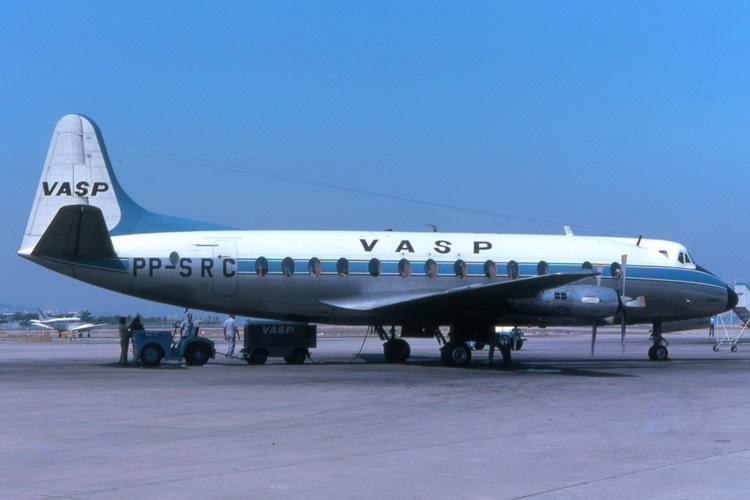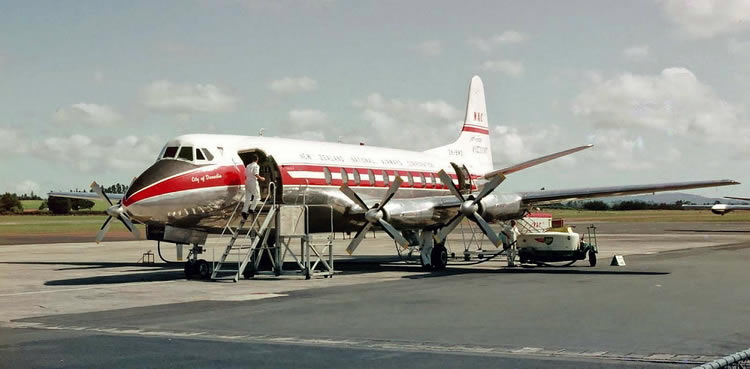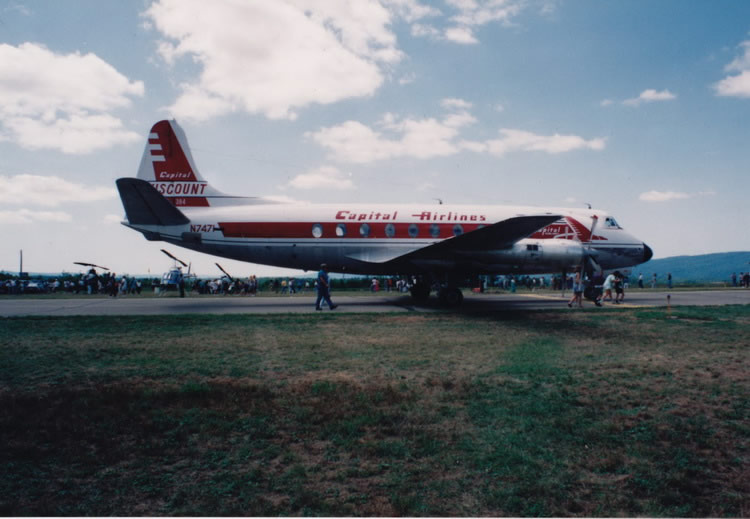VICKERS VISCOUNT AIRCRAFT HISTORY
INFORMATION PICTURES AND FACTS
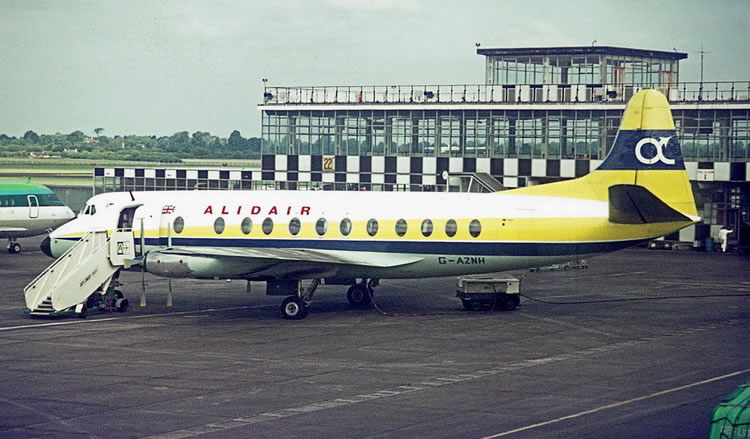 |
The Vickers Viscount was a British medium-range turboprop airliner first flown in 1948 by Vickers-Armstrongs, making it the first such aircraft to enter service in the world.A product of the Brabazon Committee, it was a ground-breaking aircraft making use of a brand-new form of propulsion, the turboprop engine, replacing the conventional piston engine.
The Viscount was well received by the public for its favourable cabin conditions, which included pressurisation, significant reductions in vibration and noise, and large panoramic windows. Due to these unique advantages, it went on to be one of the most successful and profitable of the first generation post-war transport aircraft types; a total of 445 Viscounts were built for a wide range of international customers, including the North American market.
The Viscount was developed in response to the Brabazon Committee's Type II design for post-war use, calling for a small sized, medium range pressurised aircraft to fly its less-travelled routes, carrying 24 passengers up to 1,750 mi (2,816 km) at 200 mph (320 km/h). During discussions between the committee and Vickers' Chief Designer Rex Pierson, Vickers advocated the use of turboprop power, believing piston engines to be a dead end in aviation. The Brabazon committee was not so convinced, but agreed to split the specification into two types, the Type IIA using piston power, which led to the Airspeed Ambassador, and the turboprop-powered Type IIB which Vickers was selected to develop in April 1945. British European Airways (BEA) was involved in the design and asked that the aircraft carry 32 passengers instead, but remained otherwise similar.
The first design in June 1945 was based on the Viking with four turbo-prop engines and 24-seat and designated the VC-2 or Type 453. Later a double-bubble fuselage was proposed to give extra underfloor cargo space. Both these early designs were not pressurised and it was soon realised that for economic operations at 20,000 ft (6,100 m) it needed pressurisation, the two early designs were abandoned and a circular cross-section variant was offered at the beginning of 1946. The resulting 28-seat VC-2 was financed by the Ministry of Supply with an order for two prototypes but before the contract for the prototypes was signed the government asked for the capacity to be increased to 32-seats, this resulted in a fuselage increase from 65 ft 5 in (19.94 m) to 74 ft 6 in (22.71 m) and an increased wingspan of 89 ft (27 m).
The contract for the aircraft to Air Ministry specification C.16/46 was signed on 9 March 1946 and Vickers allocated the designation Type 609 and the name Viceroy to the aircraft. Although George Edwards had always favoured using the Dart other engines were still being considered including the Mamba which the government specified for the two prototypes, the choice of the Mamba engine increased the gross weight of the aircraft but Vickers made sure that the engine nacelle would fit either the Mamba or Dart. While the Dart was making better progress in development than the Mamba the government asked in August 1947 for the second prototype to be Dart-powered. The second prototype was designated as the Type 630 and was later named as the Viscount. The first prototype already under construction was converted to the Dart engine as a Type 630 as well.
The resulting Vickers Type 630 design was completed at Brooklands by Chief Designer Rex Pierson and his staff in 1945, a 32-seat airliner powered by four Rolls-Royce Dart engines providing a cruising speed of 275 mph (443 km/h). An order for two prototypes was placed in March 1946, and construction started almost immediately in the company's Foxwarren Experimental Department. Originally to be named Viceroy after the viceroy of India, Lord Louis Mountbatten; the aircraft was renamed as Viscount following India's independence in 1947. There was some work on replacing the Darts with the Armstrong Siddeley Mamba, but this was dropped by the time the prototypes were reaching completion. After Pierson's death in 1948, George Edwards (later Sir George Edwards) took over as chief designer and assumed all technical control over the Viscount project.
The prototype Type 630, registered G-AHRF, made its maiden flight from the grass airfield at Wisley on 16 July 1948, piloted by Joseph "Mutt" Summers, Vickers' chief test pilot. The design was considered too small and slow at 275 mph (443 km/h), making the per passenger operating costs too high for regular service, and BEA had placed an order for 20 piston engined Airspeed Ambassadors in 1947. Retrospectively commenting on Britain's aviation industry, Duncan Burn stated: "Had BEA committed itself to full support of the Viscount... it was quite likely that the smaller version would have gone into production... It was in a sense BEA's lack of enthusiasm for the 630 which made possible the [Viscount's] success."
Early flight trials, however, showed the qualities of a turboprop, resulting in a February 1949 order from the Ministry of Supply for a prototype of a stretched version with more powerful engines, the Type 700. Meanwhile, the first prototype Type 630 was awarded a restricted Certificate of Airworthiness on 15 September 1949, followed by a full certificate on 27 July 1950, which allowed the aircraft to be placed into service with BEA on 29 July to familiarise the pilots and ground crew with the new aircraft. It flew scheduled flights between London and Paris, and London and Edinburgh for a month. The 29 July flight between Northolt and Paris – Le Bourget Airport with 14 paying passengers was the first scheduled airline flight by any turbine-powered aircraft.
The second prototype Viscount, the Type 663 testbed, had two Rolls-Royce Tay turbojet engines and first flew in RAF markings as VX217 at Wisley on 15 March 1950. It was demonstrated at the Farnborough SBAC Show in September and was later used in the development of powered controls for the Valiant bomber. It later saw use as a test bed by Boulton Paul Ltd for the development of electronic flight control systems.
The designers then went back to the drawing board and the aircraft emerged as the larger Type 700 with up to 48 passengers (53 in some configurations), and a cruising speed of 308 mph (496 km/h). The new prototype G-AMAV first flew from Brooklands on 28 August 1950, and served as a development aircraft for the type for several years. In late August 1950, BEA placed an order for 20 aircraft; further orders would come in the following year from operators such as Air France, Aer Lingus and Misrair.
Regular passenger flights were launched by BEA in April 1953, this was the world's first scheduled turboprop airline service. BEA proceeded to become a large user of the Viscount, as well the rival Handley Page Dart Herald; by mid-1958 BEA's Viscount fleet had carried over 2.75 million passengers over 200,000 flight hours. Following BEA's launch of the type, multiple independent charter operators such as British Eagle were quick to adopt the Viscount into their fleets. During the 1960s, the Viscount had formed the backbone of domestic air travel in Scotland.
The early operational service of the Viscount quickly proved it to have significant performance advances over its rivals, and orders rapidly rose as a result; up to November 1952 only 42 aircraft had been ordered; by the end of 1953, early on in which it had been introduced, the order book had risen to 90, and 160 by the end of the following year. Vickers was able to quickly respond to the new orders as it had gambled on such orders emerging and early on the decision had been taken to commit to a high production rate at the company's own risk. In 1957, the Vickers production line was producing the Viscount at a rate of one aircraft every three days. In October 1953, the Viscount 700 prototype G-AMAV achieved the fastest time (40 hours 41 minutes flying time) in the transport section of the 12,367 mi (19,903 km) air race from London to Christchurch, New Zealand. The aircraft averaged 320 mph (520 km/h) in the event, crossing the finishing line nine hours ahead of its closest rival, a Douglas DC-6A of KLM, with the latter winning on handicap. En route, equipped with extra fuel tanks, it flew 3,530 mi (5,680 km) nonstop from the Cocos (Keeling) Islands to Melbourne's Essendon Airport in 10 hours 16 minutes. Trans Australia Airlines (TAA) received its first Viscount in 1954, and the aircraft quickly proved profitable, leading to additional orders. The Viscount proved to be an invaluable aircraft for TAA, aviation author John Gunn stating that "TAA had achieved dominance on Australia's trunk routes with its turboprop Viscounts". TAA would procure over a dozen Viscounts, and purchase later turboprop aircraft such as the Fokker F27 Friendship; it later transitioned to jet aircraft as passenger demand outgrew the capacity of the Viscounts. In order to compete with its rival TAA, another Australian airline, Ansett-ANA also procured its own small Viscount fleet; the Viscount allowed Ansett to set out a faster and superior service than the larger TAA for the first time. The first North American airline to use turboprop aircraft was Trans-Canada Air Lines (TCA), with a small fleet of Type 700 Viscounts. Initially, TCA was cautious of the Viscount due to the turboprop engine being a new technology, and there had been a preference for acquiring the piston-engined Convair CV-240 instead; praise of the Viscount from pilots and a promise from Vickers to make any design changes desired by TCA persuaded it to procure the Viscount instead. On 6 December 1954, the first Viscount was delivered to Canada in a large media event which including an improvised aerial display. TCA became a prolific operator of the type, having placed multiple follow-up orders for addition Viscounts; by 1958 TCA had an operational fleet of 51 Viscounts. Aviation author Peter Pigott later wrote that: "For TCA and Vickers, the Viscount was a public relations coup. Passengers loved the quiet ride and panoramic windows. No other airline in North America flew turbo-prop airliners then, and no other British aircraft was bought by American airlines in such quantity." TCA would operate the Viscount for two decades until its successor company, Air Canada, ended Viscount services in 1974, the type was replaced by the McDonnell Douglas DC-9. The first airline in Latin America to operate the Viscount was Cubana de Aviación. Cubana's -755D Viscounts, delivered in 1956, were placed on the Havana-Miami and Varadero-Miami routes, and were successful at raising Cubana's market share on these routes. During the 1958 Cuban elections, a Cubana Viscount was hijacked by gunmen aligned with the 26th of July Movement, the aircraft crash-landed on the sea, reportedly killing 17 of the 20 occupants. When the U.S. government imposed its embargo on Cuba in 1962, Cubana decided to sell all of its Viscounts, they were replaced by Soviet-built turboprop aircraft. South African Airways (SAA) was another major operator of the Viscount, by January 1959 it was operating on all of SAA's domestic routes. In 1961, SAA had seven Viscounts, and acquired a further aircraft from Cuba in the following year. In 1965, SAA began receiving Boeing 727s, which had been selected the previous year as a jet-powered replacement for the Viscount. SAA sold its last Viscount to British Midland in the 1970s. Central African Airways (CAA) had been a traditional customer of Vickers, already operating a number of Vickers Vikings when it received its first Viscount on 25 April 1956. The introduction of the Viscount roughly coincided with the opening of a major airport at Salisbury, the Viscount became the mainstay of the route between Johanesburg in South Africa, Salisbury (now renamed Harare) in modern-day Zimbabwe, and London, England. CAA had enough Viscounts to entirely replace its Viking fleet and to occasionally lease them to other operators. More Viscounts were purchased by CAA right up until 1965, at which point CAA announced its intention to procure the British Aircraft Corporation's jet-powered BAC 1-11 successor as the long-term successor to the Viscount. BEA, and its nationalised successor British Airways (BA), vigorously operated the Viscount on Britain's domestic routes. In the 1980s, British Airways began withdrawing its aging Viscount fleet; all BA Viscount operations in Scotland had ended in 1982. Former BA aircraft were often sold on to charter operators such as British Air Ferries. Some airlines chose to replace the Viscount with a newer turboprop aircraft, the Hawker Siddeley HS 748. On 18 April 1996, British World Airlines conducted the last Viscount passenger service in Britain, exactly 46 years after BEA's inaugural flight; on board the flight were Sir George Edwards and Sir Peter Masefield. In late 1960, the People's Republic of China had begun negotiations with Vickers for as many as 40 Viscounts, however negotiations were protracted due to political tensions. At this point, China sought arrangements to purchase Viscounts second-hand from existing operators, and later achieved successive deals regarding the Viscount with Britain directly. The last batch of six aircraft built were for the Civil Aviation Administration of China, which were delivered during 1964; at the end of production a total of 445 Viscounts had been manufactured. Many Viscounts were refurbished and saw new service with African operators, sales of these second-hand aircraft continued into the 1990s. |
© AviationExplorer.com - The Website For Aviation Enthusiasts |





